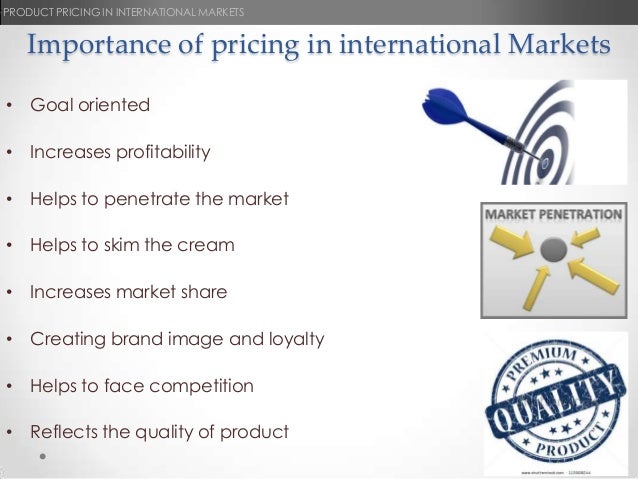Source Google
Export Readiness:
Costing, Financial Forecasting and Product Pricing
Section 3 Part 4
Methods of International Pricing
There are different options for consideration related to your international pricing. Cost-Plus Method The “cost-plus” method of international pricing is based on your domestic costs, “plus” additional exporting costs associated with international sales and promotion, product modification, etc.
Remember: costs associated with insuring or deliveries are usually “pass-through costs” that do not have a markup component in arriving at a selling price.
- The cost-plus method allows you to maintain your domestic profit margin percentage, and thus to set a suitable price.
- Any costs not applicable, such as domestic marketing costs, are subtracted from the overall cost prior to markup to arrive at your selling price.
- This method does not take local market conditions into account.
With cost-plus pricing, different marketing costs and/or modifications to the product could change the cost basis dramatically, making the product either more or less costly for export.

Source Google
Marginal-Cost Method
The “marginal-cost” method will likely provide a more realistic means of determining true cost of producing your product for export.
To use the marginal-cost method:
- Determine the fixed costs, if any, of producing an additional unit for export. Fixed costs are costs that occur whether or not you are selling anything. For example: mortgage payments on land or buildings. — If your company is operating at a profit, and additional assets are not being used for exporting, then fixed costs have been covered.
- Any additional costs of producing products for export are termed variable costs.
There may be instances where additional ...
All Related Posts Are On
The Left Side Of This Blog
***
MORE INFORMATION
Cost plus pricing is a cost-based method for setting the prices of goods and services. Under this approach, you add together the direct material cost, direct labor cost, and overhead costs for a product, and add to it a markup percentage (to create a profit margin) in order to derive the price of the product
***
***



No comments:
Post a Comment